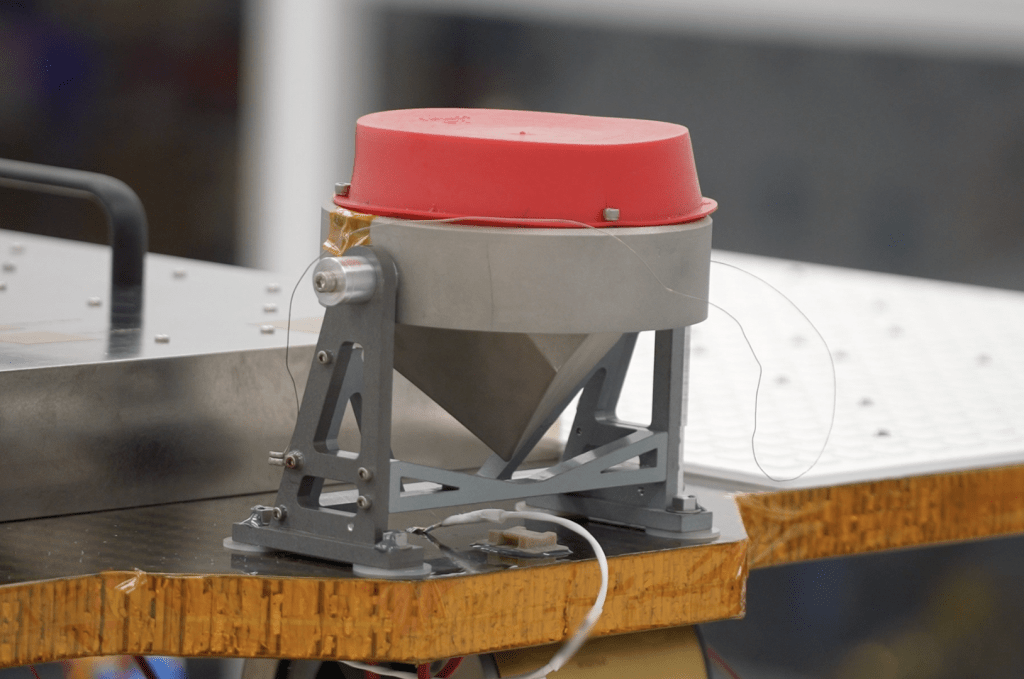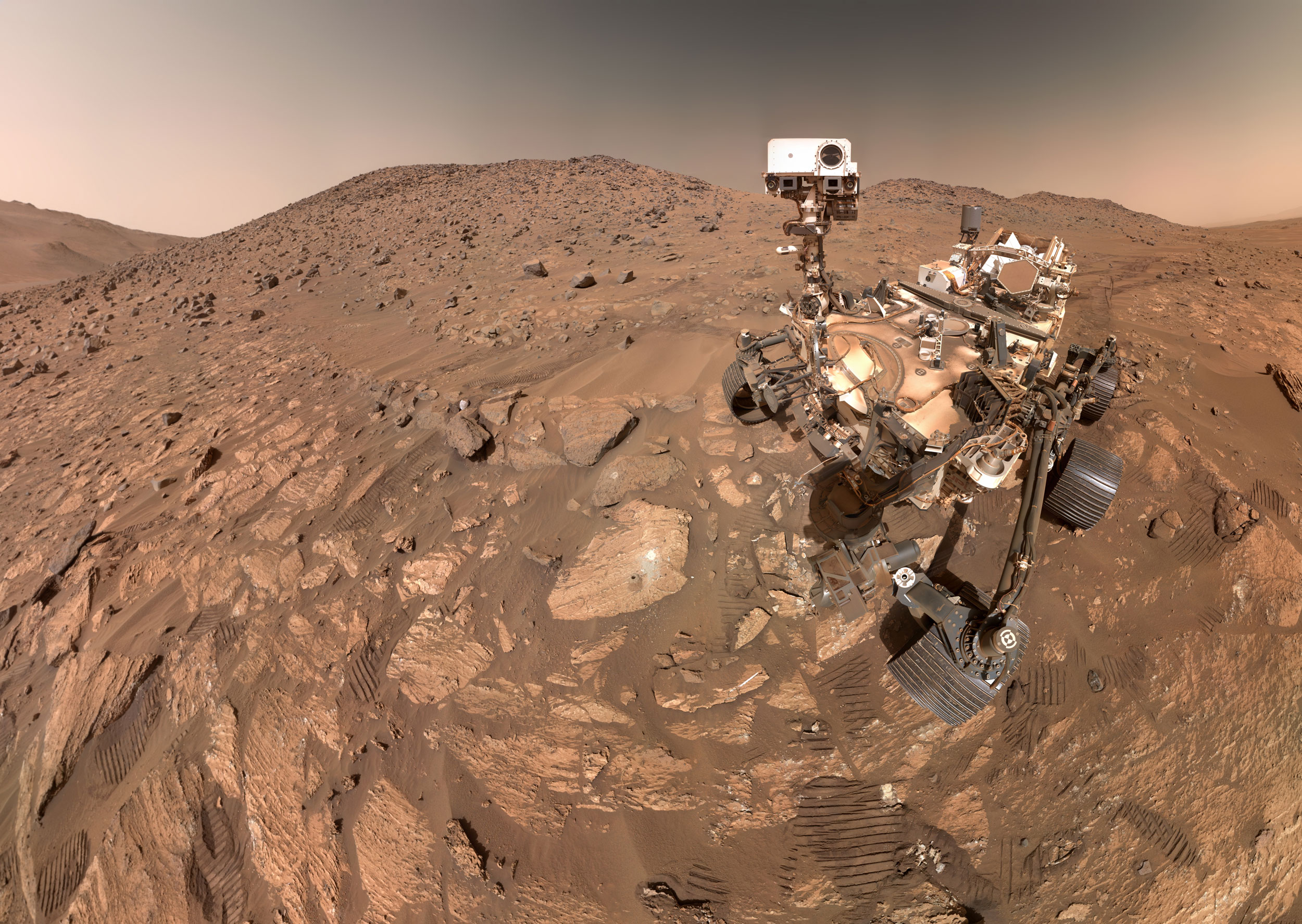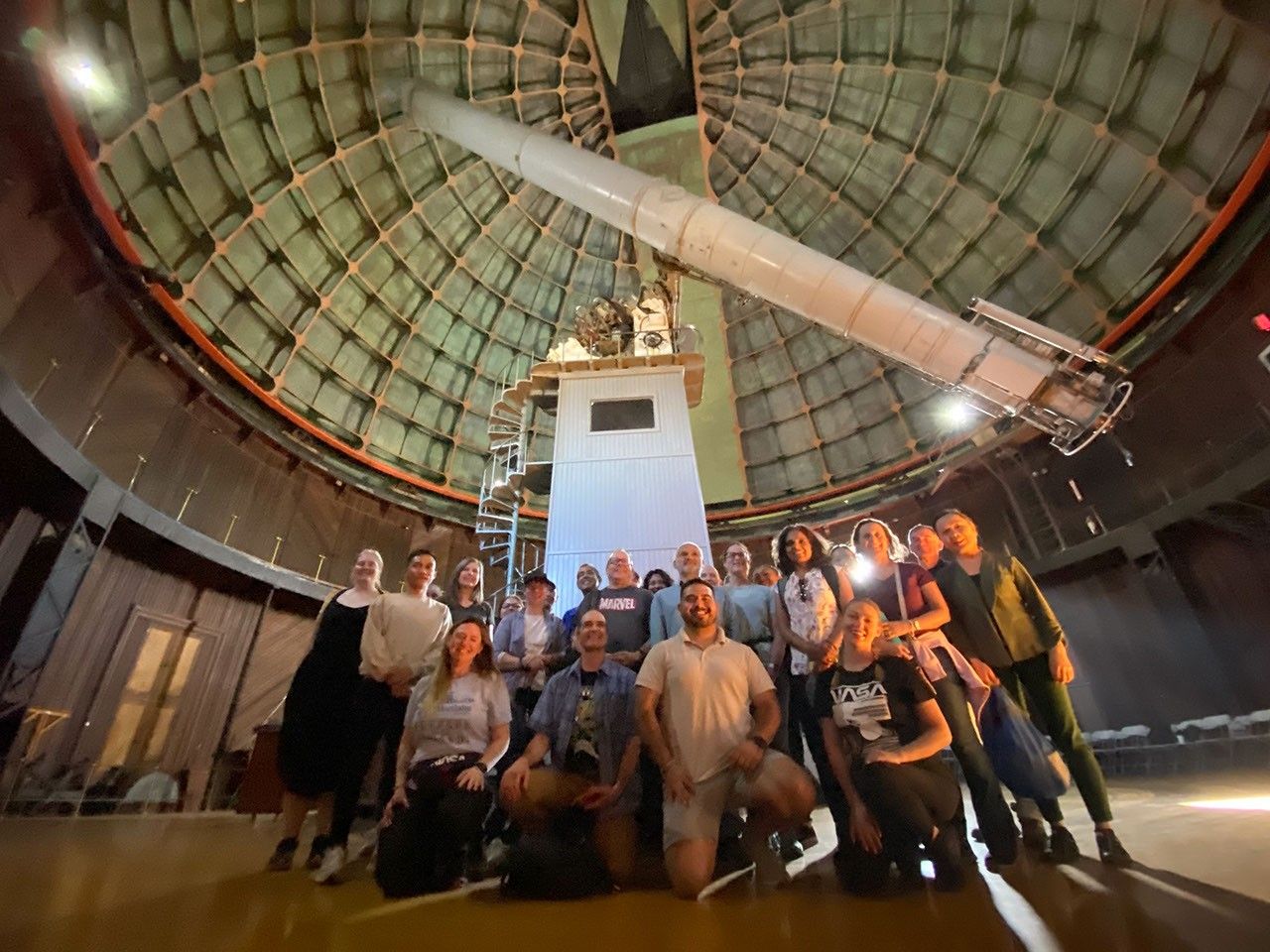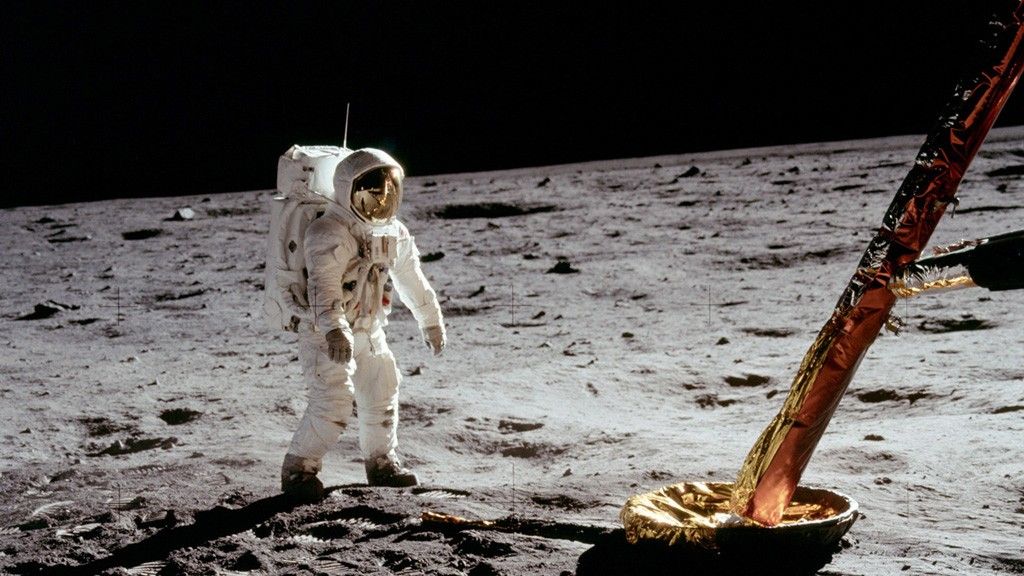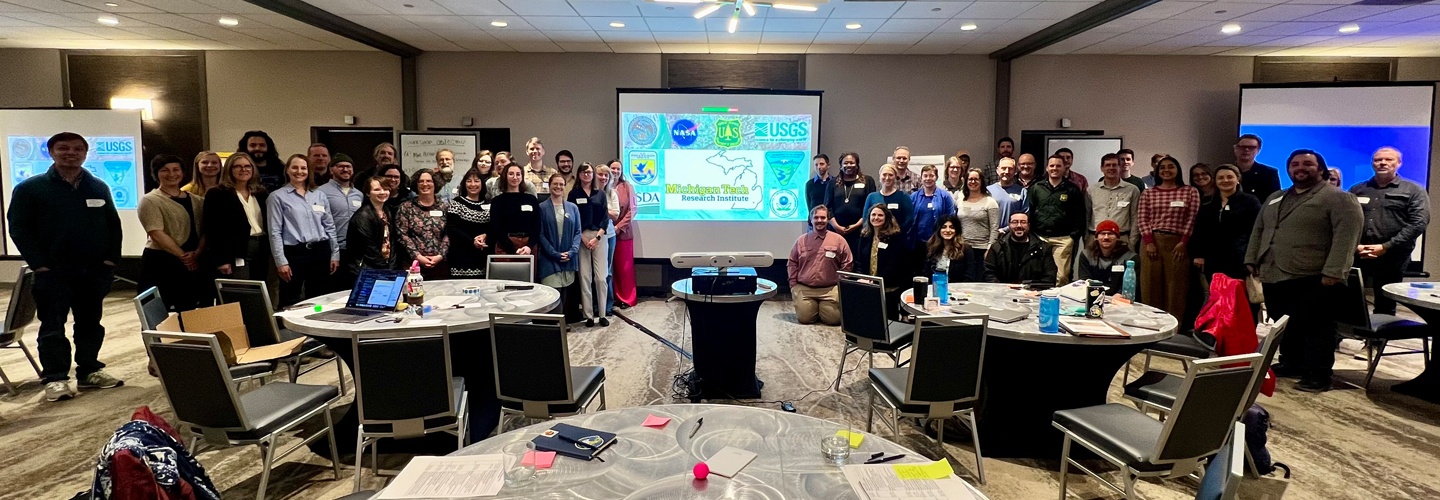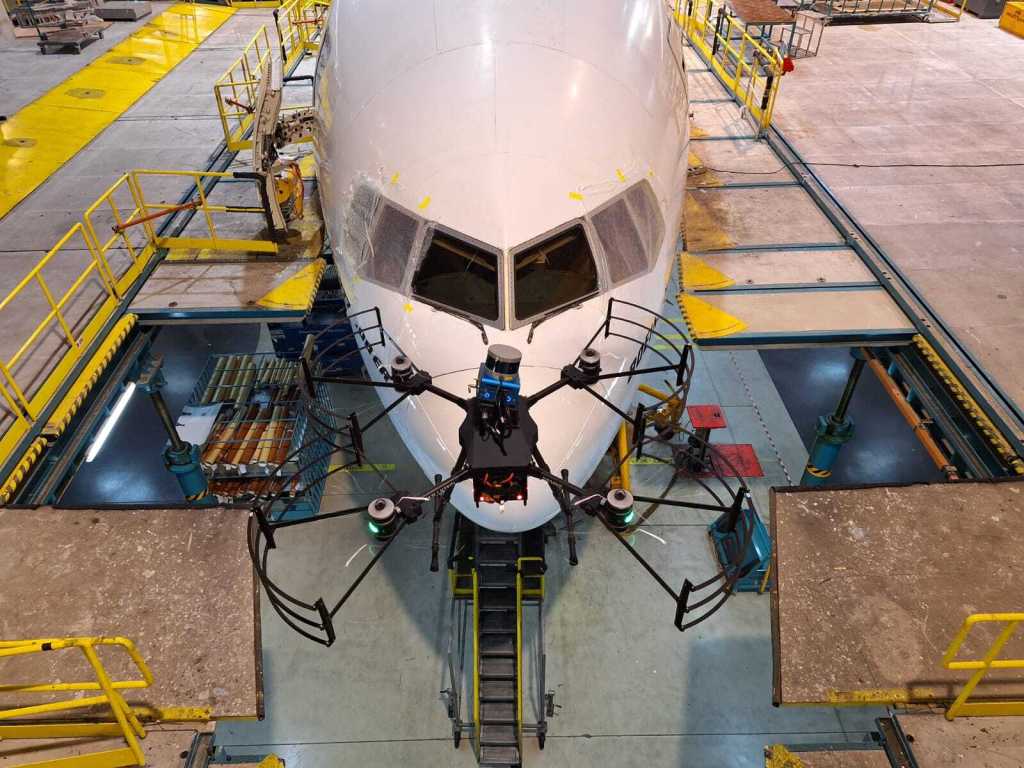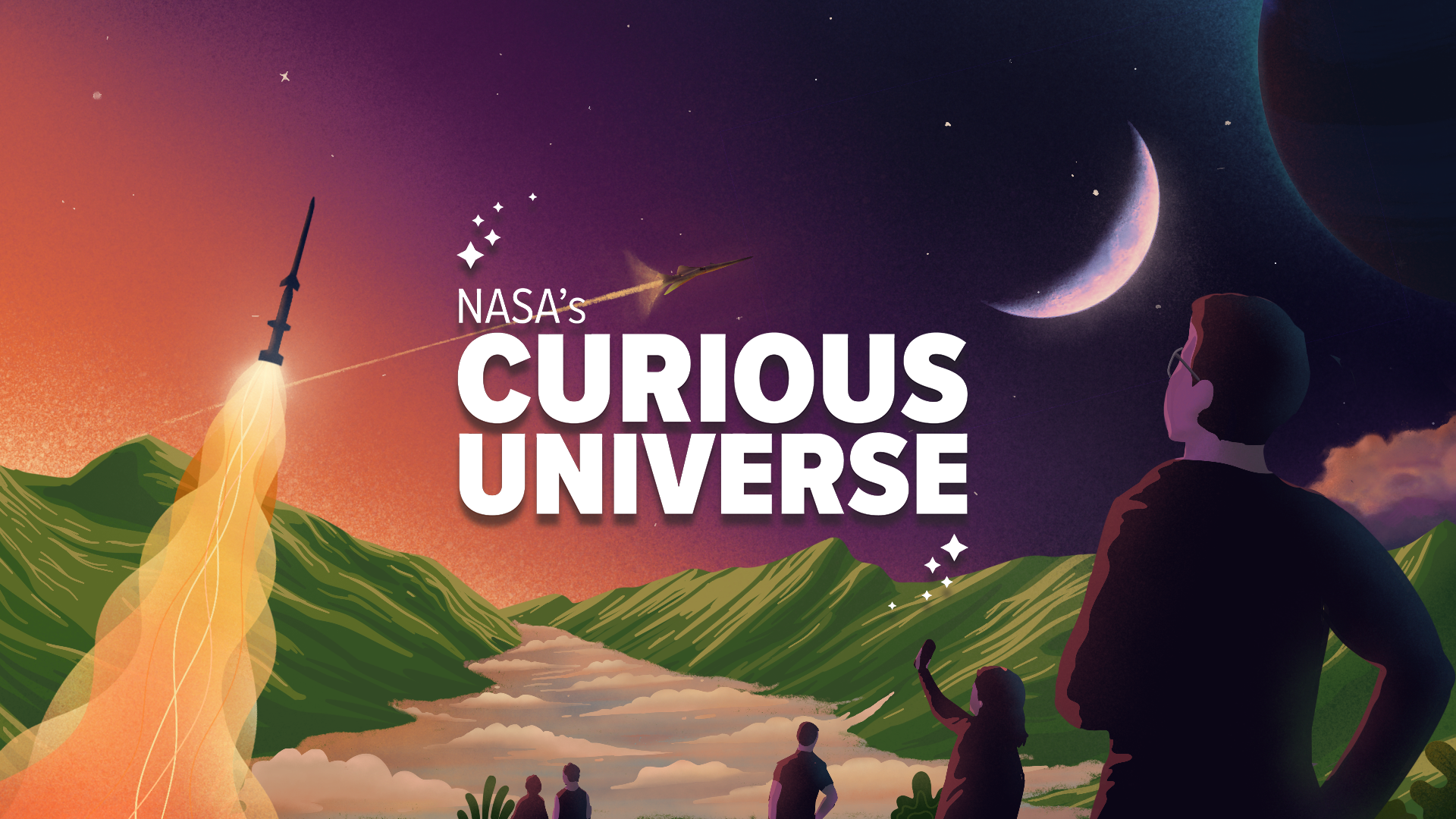
Introducing NASA’s Curious Universe
Our universe is a wild and wonderful place. Join NASA astronauts, scientists, and engineers on a new adventure each episode — all you need is your curiosity. Explore the lifesaving systems of space suits, break through the sound barrier, and search for life among the stars. First-time space explorers welcome.
Episode Description
The Moon is our constant cosmic companion and the only planetary body outside of Earth where humans have set foot. As we prepare to head back to the Moon with the Artemis program, let’s take a look at what we know about this wonderful and mysterious natural satellite. Join lunar scientists Noah Petro, Casey Honniball, and Jacob Bleacher on an exploration of the Moon.
Subscribe
[Song: Do We Like It Underscore by McAvoy]
Noah Petro
Our interaction with the Moon over human history, mirrors technological advances that we’ve made here on the Earth. And the first observations of the Moon, the ancients, they looked up and saw light and dark areas. That was the very first scientific observation because just to see that there are differences there tells you something happened.
Noah Petro
Then the invention of the telescope and the advancement of telescopes that let you look closer.
Noah Petro
And then we get to the Space Age, and we send our first rockets. And then we send Apollo and we send astronauts to the surface. In that very, very narrow window of time, our complete understanding of Earth’s history, of the Moon’s history, of the solar system’s history transformed and I expect that with this next era of lunar exploration that we’ll have similar fundamental revisions in our understanding of how things work.
[Theme Song: Curiosity Intro by SYSTEM Sounds]
HOST PADI BOYD: This is NASA’s Curious Universe. Our universe is a wild and wonderful place. I’m your host Padi Boyd and in this podcast, NASA is your tour guide.
HOST PADI BOYD: Most of what we know about our universe, we’ve learned through data and imagery from spacefaring technology or ground-based telescopes.
HOST PADI BOYD: But there’s one planetary body humans have had the chance to study from the surface… the Moon!
[Song: On the Same Boat Underscore by Giordani Calsina]
[[Archival Tape / Neil Armstrong: “That’s one small step for a man, one giant leap for mankind…” ]]
HOST PADI BOYD: The Moon is our closest celestial friend, staying nearby in our Earth’s orbit and impacting life here in so many ways. When it’s visible, it’s the brightest object in the night sky, and for as long as humans have looked up, it’s captivated our imaginations.
HOST PADI BOYD: So let’s explore the Moon.
[Song: Cynthia Instrumental by Goret]
HOST PADI BOYD: What we’ve learned over centuries of science and why we are so fascinated with this constant, yet changing, cosmic companion.
Noah Petro
We know more about the Moon than we know about most other objects in the solar system because we have the benefit of having been there.
HOST PADI BOYD: That’s Noah Petro, a lunar research scientist and Moon enthusiast.
HOST PADI BOYD: Our Moon is a fascinating fixture for us here on Earth. Technically speaking, it’s a natural satellite, smaller than a planet but bigger than an asteroid, and just like the man-made satellites we send into space, the Moon stays in orbit because of Earth’s gravitational pull.
HOST PADI BOYD: Most planets in our solar system, and even some asteroids, have a moon.
HOST PADI BOYD: The Moon is unique in our sky. Everything else we can see… planets, stars, meteors…are all small little pinpricks of light. But the Moon is a main feature. So it’s not surprising that for centuries scientists have wanted to learn more about it.
Noah Petro
The Moon is a rocky object, it is a geologist’s paradise.
HOST PADI BOYD: From ancient astronomers spotting lunar details through a telescope in 1609, to astronauts setting foot on the surface with the Apollo 11 mission in 1969, we’ve been studying the mysteries of the Moon from many vantage points. And we realized there was a lot to learn… not only about space but about our home planet.
Noah Petro
It is roughly the same surface area as the continent of Africa. The rocks that we’ve brought back from the Apollo program, the rocks that we can understand from looking at the Moon with different instruments, are similar to rocks that we have here on the Earth. We know that the dark areas that we see from the Earth are similar to rocks that we see in Hawaii, or Iceland.
Noah Petro
The bright surface on the Moon, the ancient crust of the Moon, is a rock called anorthosite. We see places in Montana, upstate New York, that have anorthosite as well. So the Moon is made of rocks that are similar to things that we see here on the Earth. But the Moon is very different than the rocks that we see here on Earth as well. And so it’s a wonderful contrast and comparison to the rocks that we have here on our home planet.
HOST PADI BOYD: The composition of the Moon can teach us about our Earth today but it also provides a unique place to study processes that the Earth doesn’texperience very often.
HOST PADI BOYD: Earth has a protective layer between us and space…our atmosphere! So a lot of space things that might hit us, like meteors and asteroids, burn up instead. The Moon is unprotected, so it is constantly bombarded by space debris, from tiny micrometeorites to larger rocks. And each impact results in a crater.
[Song: Can’t Help Myself Instrumental by Russell]
Noah Petro
Every place we go on the Earth tells us something about how the world works, how the Earth has worked today, or in the geologic past. But there’s one process that’s not well represented on the Earth and that’s impact cratering. And that’s when a meteorite or comet strikes the surface of a planet. And you go to the Moon and you can learn about impact cratering, a fundamental process that happens everywhere in the solar system that’s not well represented here on Earth, because we have this wonderful atmosphere to protect us. We have plate tectonics, we have erosion. And so those features disappear with geologic time, but on the Moon, they’re preserved. And so when you study the Moon, you get a window into not only what’s happening today, but what happened four and a half billion years ago, just after the planets formed. And there’s a record that’s on the lunar surface that is absent effectively here on the Earth.
Casey Honniball
I’m Casey Honniball, I’m a NASA Postdoctoral Program Fellow at NASA Goddard Space Flight Center, and I study the Moon looking for water on the surface.
HOST PADI BOYD: Casey is also a lunar scientist. She uses telescopes to track different chemicals and particles on our Moon’s surface.
HOST PADI BOYD: The Moon is made of all kinds of elements and layers. So how exactly did the Moon come to exist?
[Song: Edge of Imagination Instrumental by Peach]
Casey Honniball
So the Moon is believed to have formed from a giant impact, a Mars-sized object impacting the Earth, which would have then created a lot of debris in a ring around the Earth, which would eventually collect together to form the Moon.
HOST PADI BOYD: That’s right, the Moon is made of Earth! Billions of years ago, around four and a half billion to be exact – scientists think an emerging planet collided with a very young and still-forming Earth – sending debris out into orbit.
HOST PADI BOYD: As all those Earth rocks swirled around, they collected into a hot and molten mass and eventually formed what we now see as one solid, rocky object… our Moon!
Casey Honniball
The Moon currently isn’t changing very much. So the surface we see today we will see for a very long time. But over the Moon’s lifetime, which is like 4.5 billion years, it’s changed drastically. It went from being a molten body with no solid surface to a solidified surface that would have big comets and asteroids impacting it, which would create the dark patches and the light patches that we see on the Moon today.
Casey Honniball
The Moon is a pretty large body, it’s actually one of the largest satellites in our solar system. So it’s got a lot of rocky locations, but it also has a lot of surface area that is covered with lunar dust or regolith.
HOST PADI BOYD: Regolith is a really fun word for moondust! Generally, the term “regolith” means any kind of dusty, rocky material. It’s a scientist’s description of choice for the fine, thin particles that cover the lunar surface.
HOST PADI BOYD: Not only is the Moon our window to the solar system, it also greatly impacts life here on Earth. The gravity of this large satellite pulls on the Earth as it orbits, causing all sorts of natural phenomena we might take for granted.
[Song: Smart Future Underscore by Dury]
Casey Honniball
The Moon controls our tides, so without the Moon, our tides would be very weak. We wouldn’t have big surfing waves that people like to do those crazy stunts on. So when the Moon is on one side of the Earth, it creates a bulge on that side. So it basically pulls the water towards the Moon. And as the Moon rotates, that bulge is going to follow the Moon which is what creates our tides. The Moon also controls our time of day, so without the Moon, our days would be much, much shorter. And then because we have the Moon and it’s gravitationally bound to the Earth, it controls our seasons as well.
HOST PADI BOYD: The Earth’s mass isn’t distributed perfectly evenly across the planet’s surface. This uneven distribution causes Earth to wobble as it spins around the Sun on its axis. But the pull of the Moon’s gravity balances out some of that wobbling, making our climate here on Earth more stable and livable.
[Song: Pensive Thoughtful Instrumental by Russell]
HOST PADI BOYD: With the Moon having such an impact on our daily lives, scientists have been pretty keen to answer fundamental questions. So we’ve developed really cool ways to learn more about our next-door neighbor.
Casey Honniball
Some of the major ways that we study the Moon is using remote sensing, so spacecraft or telescopes here on Earth that can look at the surface of the Moon, or the space environment around the Moon. I use the NASA Infrared Telescope Facility on Mauna Kea in Hawaii. And I use the NASA Stratospheric Observatory for Infrared Astronomy, SOFIA, which is an airborne telescope. Using these two things, I look for signatures of water on the surface of the Moon. My day-to-day is basically either planning observations on those two telescopes or looking at the data that was collected from the telescopes.
Noah Petro
The wonderful thing about studying the Moon is that we can apply almost any technique to studying it, from taking a rock that was brought back by an Apollo astronaut and analyzing its age, its composition, its history, to looking at data taken from satellites that orbit the Moon, to take a look at a picture of the lunar surface and try to reconstruct its history.
HOST PADI BOYD: That’s Noah, asking the interesting questions lunar scientists study every day.
Noah Petro
…What is it made of? What is its composition? What does that composition tell us about how this area formed? How it changed over time? How old is it? And if this feature is young or old? What does that tell us about how the Moon has changed in its life?
HOST PADI BOYD: The Moon might seem pretty calm from here on Earth, going about its phases logically and predictably, but it’s actually pretty active underground.
[Song: The Circle of Dreams Instrumental by Paradelles]
HOST PADI BOYD: Just like the Earth experiences seismic activity and changes, so does the Moon.
Noah Petro
We know that because of measurements that were made during the Apollo exploration of the Moon, that the Moon does have seismic activity, that it has Moonquakes – rings like a bell when it’s struck by a meteorite.
[Bell sound]
Noah Petro
There are properties of the lunar interior that suggests maybe there’s still some liquid outer core, but maybe there’s not. So we can apply all of the same types of science that we do on the Earth: volcanology, seismology… and apply them to the Moon. And indeed, one of the things that we do is try to understand the Earth better so that we can understand the Moon and apply that understanding then on to Mars, and so on and so forth.
HOST PADI BOYD: The Moon is our friend in space, but it isn’t always visible to us. It is always there, in a constant orbit, but it goes through eight distinct phases over the course of an Earth month.
HOST PADI BOYD: You’re probably familiar with these phases already, though some of their names are a little strange– the invisible newMoon, the waxing crescent, the first quarter, waxing gibbous, the bright full Moon, and then the waning gibbous, last quarter, waning crescent and new Moon once again.
HOST PADI BOYD: And the naming doesn’t end there! For centuries people have tracked full Moons and named them based on their months and seasons. These included the Wolf Moon, the Strawberry Moon, and even the Worm Moon!
[Song: Firelight Instrumental by Batchelor Peterson]
HOST PADI BOYD: Monthly Moon phases are visible to everyone on Earth, no matter what side of the planet you’re on, though they might look upside down depending on your hemisphere.
HOST PADI BOYD: That’s because the shape we see depends on what part of the sun is reflecting off the Moon during its orbit around Earth. When the Moon is between the Sun and Earth, the side facing us can’t reflect any sunlight. But when the Moon is on the other side of the Earth, away from the Sun, its whole face is lit up.
HOST PADI BOYD: This monthly dance of Sun, Moon, and Earth has helped people for generations keep track of the year, plan important events and agriculture, and keep the allure of the Moon alive.
Noah Petro
If the Moon always looked the same way, every night, same place, same spot always looked the same, it would just fall into the background. Because the Moon changes, its appearance in the sky changes. And because we have lunar eclipses where the Moon all of a sudden takes on a different color. Oh my goodness! I think that sparks our curiosity and some emotional response as well, and so whether it’s the desire to go off and write poetry or talk about how you feel.
Noah Petro
It’s comforting as well. It’s a constant reminder that we’re not alone. Again, it’s a rock, it doesn’t know. But it is there. And it feels comforting, at least to me, and that’s wonderful because it then becomes not just the scientific object, but part of literature, part of art, part of culture.
HOST PADI BOYD: The Moon changes a lot of things about life here on Earth, but what if we were to live on the Moon? How would life be different?
[Song: Midnight Driving Underscore by Wilson]
Noah Petro
Depending on where you are on the Moon, the sun goes up for 14 and a half days and goes down for 14 and a half days. At the poles of the Moon, the sun goes up for longer and shorter times. So just the day-night rhythm is going to be completely different. And depending on where you are on the surface of the Moon, it can be wildly different.
Noah Petro
Obviously, the temperature ranges extremes on the Moon are far different. So that’s why having good spacesuits, having good habitats are so important.
Noah Petro
And then, of course, there’s just the complete mind-blowing: oh, the sky is dark, there’s no blue skies, there’s no weather. The gravity is also one sixth that of the Earth, and so you’d find moving around very different, you can pick up things that are heavy on the Earth.
Noah Petro
You know, the Apollo astronauts, they were on the moon for as long as three days. They found it challenging to figure out how to move around. They had difficulties judging distances. If you or I were to go to the Moon, we’d spend the first few minutes just sort of getting our sea legs under us, our Moon legs under us, all with a constant reminder that oh, yeah, it’s very dark. There’s the sun, the sky is dark, there’s the Earth, okay, “hi Earth”. Now when we go to the far side of the Moon, or even some places at the South Pole where you can’t see the Earth, that’s going to be quite the thing you need to get adjusted to. But that’s part of exploring is going past that next hill and losing sight of home.
[Song: Rebirth Main Track by Dubois]
Jacob Bleacher
My name is Jacob Bleacher. I’m the chief exploration scientist for NASA, and I make sure that our astronauts can take science and science activities when they go to the Moon.
HOST PADI BOYD: Jacob has one of the coolest titles here at NASA – Chief Exploration Scientist. He’s thinking about all the ways we can take science off our home planet and into space.
Jacob Bleacher
My job is to make sure that as we build our spacecraft and landers and rovers and robots to go explore the Moon, that we take science along for the ride. Number one thing we want to do when we get there is scientific research to understand the Moon, our Earth, our solar system, and basically our place in the universe.
HOST PADI BOYD: The biggest leap in lunar discoveries was made during the Space Race of the 1960s.
[[Archival tape: When astronauts stand on the surface of the Moon, they will be part of what President Kennedy called the most hazardous and dangerous and greatest adventure on which man has ever embarked…]]
HOST PADI BOYD: Humans went farther than we’d ever gone before – breaking from Earth’s atmosphere and setting our sights on the Moon with the Apollo missions.
Jacob Bleacher
So we were challenged to go to the Moon in the 1960s, in part to show we could. Right? It’s a huge technological jump.
[Song: AI Technology Underscore by Dalcan]
Jacob Bleacher
Big challenges are what really drive big technological advances. And so that challenge was given to NASA and it pushed us forward. Many things that you have in your house today spun out of the technology we developed to meet that challenge.
HOST PADI BOYD: From cordless power tools and advancements in computing to reflective insulation – there are tons of space race tech that probably made it into your home. Did you know the cordless “Dustbuster” vacuum was originally created to bring back samples from the lunar surface?
Jacob Bleacher
But we also went to learn. The Apollo missions went to the Moon, and were able to collect some of the material from the surface, make observations. But there was a whole lead-up to Apollo, we had a spacecraft series called Ranger that actually crashed into the Moon because we had some big questions. Would things sink into that like quicksand or would we actually be able to interface with that surface and support a big heavy lander?
Jacob Bleacher
We landed a series of landers called Surveyor. And so those were robotic landers that went and landed on the surface. Combining these together with orbiters we sent to go around the Moon, we were able to collect a good bit of data that helped us understand what we were seeing and how to design the vehicles and the suits and the payloads to go there and do the jobs we were asking. And so we go through these phases where we learn and each time we make new observations, there’s a big pulse of new learning. And then the samples and data we had have been studied for decades following that.
HOST PADI BOYD: Twenty-four people have been to the Moon, on missions that ran between 1969 and 1972. But since the 1960s and 70s, we’ve made even more advances in our understanding of the Moon, including a particularly exciting chemical discovery made only a few years ago.
[Song: Frozen Waves Instrumental by Jeanette Finn Nicholson]
Jacob Bleacher
When we went in Apollo, you can see from pictures, it’s pretty desolate, and it looks really dry, and it is very, very dry. But we’ve learned since then, that there’s actually water on the Moon. In some places, that’s little molecules of water mixed in with the grains, and they kind of get stuck and trapped in with them. But we also think there’s actually some vast stores of water trapped inside impact craters or big holes in the ground, at the polar regions – so places that never see sunlight. This was kind of a big pulse of new knowledge for us to understand. And it’s actually driving what we’re doing with the Artemis program, which is going to the south pole of the Moon to learn more about that water history of the Moon.
HOST PADI BOYD: Casey was the scientist who made the original discovery of water on the sunlit surface of the Moon. NASA announced that discovery recently, in 2020.
Casey Honniball
So I was actually a graduate student at the University of Hawaii, sitting in my house, when I first saw this feature. I think I was actually on the phone with my graduate advisor being like, ‘I don’t know what’s happening with the data like it’s, it’s doing something weird. I’m not, I don’t know, what is happening.’ He suggested we do one little thing. And so I did that in my code, and I hit Enter, and then boom, there’s the signal. And I’m pretty sure I screamed. Because it was pretty exciting, right? We hadn’t really been able to determine whether or not water was on the surface of the Moon in sunlight regions before that. And so it was a pretty exciting moment for both me and my graduate advisor. When we went to publish the paper, SOFIA and NASA were very excited about it. And that made it all just very overwhelming and exciting.
HOST PADI BOYD: NASA is now beginning the journey back to the Moon with the Artemis program. This program, the sister of the Apollo missions, will take humans to the Moon and eventually onto Mars. But we’re not exactly going ‘back’to where we went in the 60’s and 70’s. We’re exploring a whole new region of our mysterious cosmic friend.
Jacob Bleacher
The south pole of the Moon really is a bold new area that we’ve never been to.
[Song: Moving Forward 3 Underscore by Goodman]
Jacob Bleacher
The lighting there is very different. If you have seen pictures of Apollo, we were able to take advantage of a very repetitive cycle of light and dark. Just like here on Earth, you have days and nights. On the Moon, there’s a similar cycle. But even here on Earth, when you go closer to the poles of a planet, or a moon or a satellite, the lighting gets a little different. You can have permanent darkness if you go into low-lying terrain. You can have places that are mostly sunlit. But what’s really complicated is 100 yards that way or 100 yards that way, that ratio can be different. So it really is a new, really bold challenge for us to go and explore the South Pole.
Jacob Bleacher
What we’re doing here is a continuation. It’s exploring the Moon. This is a whole exploration strategy. Apollo was part of it. Artemis is part of it. There will be future explorers, hopefully some folks listening right now, who will be part of it.
HOST PADI BOYD: The Moon continues to fascinate us as humans and explorers. It’s the next frontier for life in space, and it reminds us that we’re all connected here on planet Earth.
HOST PADI BOYD: As we look to the future of lunar exploration, we can’t wait to see what the next generation of explorers will find… what questions they’ll ask… and what mysteries our Moon still holds.
[Song: Curiosity Outro by SYSTEM Sounds}
HOST PADI BOYD: This is NASA’s Curious Universe. This episode was written and produced by Christina Dana. Our executive producer is Katie Atkinson. The Curious Universe team includes Maddie Arnold and Micheala Sosby with support from Caroline Capone and Juliette Gudknecht.
HOST PADI BOYD: Our theme song was composed by Matt Russo and Andrew Santaguida of SYSTEM Sounds.
HOST PADI BOYD: Special Thanks to Nancy Neal Jones, Molly Wasser, and the planetary communications team.
HOST PADI BOYD: If you liked this episode, please let us know by leaving us a review, tweeting about the show @NASA, and sharing NASA’s Curious Universe with a friend. And, remember, you can “follow” NASA’s Curious Universe in your favorite podcast app to get a notification each time we post a new episode.
HOST PADI BOYD: Still curious about NASA? You can send us questions about the episode or a previous one and we’ll try to track down the answers! You can email a voice recording or send a written note to NASA-CuriousUniverse@mail.NASA.gov. Go to nasa.gov/curiousuniverse for more information.
Casey Honniball
If we had two Moons…well they would definitely be fighting for the tides, right? And also it depends on how big the other Moon is. If the other Moon is pretty small, and its gravitational pull isn’t very strong, then our Moon would dominate it. You probably wouldn’t notice very many effects.
Casey Honniball
But if the second Moon was pretty large, comparable to the Moon, they would definitely fight for the tides, both of them would be pulling on that water, so your tides would be very different.
Casey Honniball
And then the rotation of the Earth would also be different, because the Moon is slowly taking away our spin. So if you have two, and they’re both pulling on the Earth, maybe our days would be even longer! I’ve never thought about that before!


